
© Marty Sohl. (Click image for larger version)
American Ballet Theatre
16 Oct – Fall Gala: Theme and Variations, Let Me Sing Forevermore, A Gathering of Ghosts
17 Oct – The Masters: Theme and Variations, A Gathering of Ghosts, The Seasons
★★★★✰
New York, David H. Koch Theater
16, 17 October 2019
www.abt.org
davidhkochtheater.com
Autumn Song
The fewer the speeches, the better the gala – this universal truth seems to have bypassed the organizers at American Ballet Theatre (ABT). At the opening of its fall season, on Oct. 16, there was too much talking, particularly a long and rambling speech by Lisa Lutoff-Perlo, the CEO of Celebrity Cruises, with whom the company now has a partnership (and who was being presented with an award). The electronics company LG, another business partner of ABT’s, had set up an assemblage of its products in the foyer of the Koch Theater. Everyone understands the demands of corporate sponsorship, but this seemed like a bridge too far.
Then, between the speeches, came the dancing. The fall season consists of mixed bills, combining new and older works. Both the gala and the performance the following night opened with George Balanchine’s 1947 Theme and Variations, an example of the choreographer at his most classical and most grand. The Oct. 17 performance had the added weight of falling hours after the news broke that Alicia Alonso, who was in the original cast, had died, at the venerable age of 98. Her DNA lives on in Theme, with its grand classicism and implacable technique. There is no better tribute to Alonso’s power and musicality.
There is some footage of Alonso and Igor Youskevitch dancing Theme in 1947 here: https://www.youtube.com/watch?v=_YDW0NrNnqg. (sorry can’t embed the video. Ed)
Both New York companies, New York City Ballet (NYCB) and ABT, perform Theme; it is jarring to see just how different the ballet looks on each company. The ABT dancers don’t capture the energy in the feet and legs; they don’t point their feet hard enough, or cross their tendus tautly enough, at least if you’re a fan of that sharp, angular Balanchine look. The orchestra’s tempi are a slower, too. Overall, I felt that casts I saw lacked excitement, but the opening night cast, Devon Teuscher and Corey Stearns brought something else: an adult glamour that City Ballet is sometimes lacking. Teuscher’s use of her upper body, in particular, was ravishing, the way she completed the line of her shoulders with the tilt of her head just so, as well as the generous, ample, melodic way she used her arms. Her upper body completed Tchaikovsky’s phrases, so that they lingered just a little bit longer in the air. The interplay between Teuscher and the excellent solo violinist, Kobi Malkin, was one of the highlights of the night. It was also refreshing to see the warmth between Teuscher and her partner, Corey Stearns; their chemistry added to the overall glow of the ballet.

© Rosalie O’Connor. (Click image for larger version)
Jessica Lang, whose Garden Blue returns this season, provided a light, jazzy pas de deux for two of the company’s most promising young dancers, Catherine Hurlin and Aran Bell, set to Tony Bennett Songs. There are superficial similarities between Let Me Sing Forevermore and Twyla Tharp’s Sinatra Songs – American popular music, a jazzy feel – but they don’t get you very far. Unlike that sly piece, Let Me Sing is not a comment on the ballroom genre. Instead, it’s a romp for two dancers overflowing with charm and energy, tailor-made for their talents. (And in fact it was originally created for the Erik Bruhn Competition, earlier this year.) He’s classical and a bit reserved; she’s funny and electric. Both can show off when called to upon to do so. They slow dance together, she climbs up the front of his body, he lifts and spins her around, they fly through the air. It’s utterly un-pretentious, high-energy entertainment.

© Rosalie O’Connor. (Click image for larger version)
The headliner of the season is a new work by Twyla Tharp (her seventeenth for the company), the eccentrically-named A Gathering of Ghosts, made for Herman Cornejo on the occasion of his 20th anniversary with the company. The concept is a little wacky – not atypical for Tharp: most of the cast of twelve is made up of “ghosts,” listed in the program as Louis XIV, Murasaki, Proust, the North Wind, etc. Then there are four “consorts” (Skylar Brandt, Zimmi Coker, Luciana Paris, and Cassandra Trenary), and finally, a “host,” Herman Cornejo. The colorful, sparkly, trippy but distracting costumes are by Norma Kamali, the designer of Tharp’s sporty classic In the Upper Room. Why Lois XIV is wearing a long tutu is anybody’s guess.
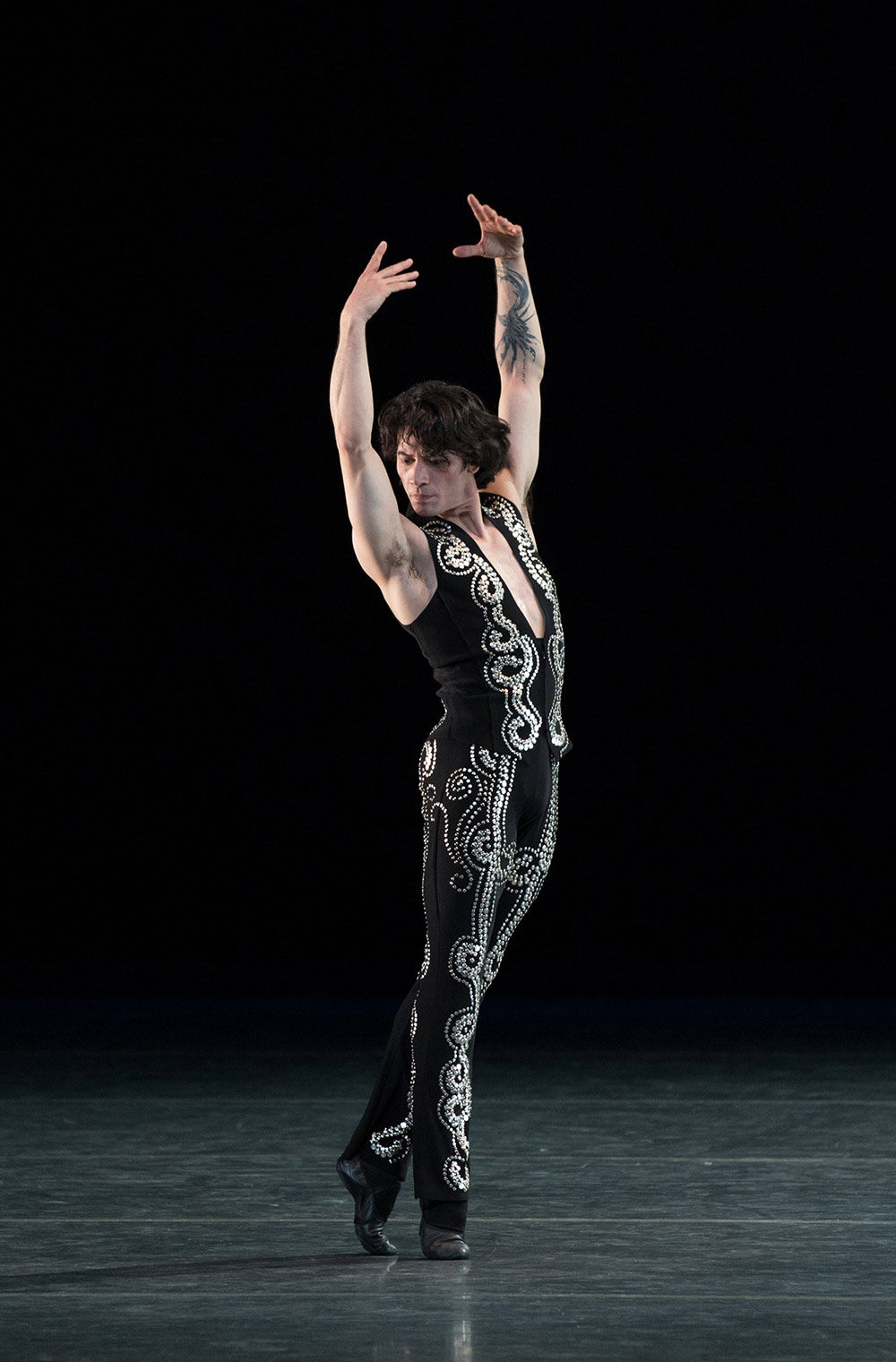
© Rosalie O’Connor. (Click image for larger version)
The glam costumes tell their own story. But in reality the ballet, set to Brahms’ nostalgia-filled second string quartet, reads as a tribute to Cornejo. Just as Brahms’ music evokes memory, Cornejo appears to imagine, or remember, the other figures in the ballet, embodiments of people from his past and present. Mostly, he dances alone, with the dreamy nonchalance of a Romantic outsider. Kamali has dressed him in a look I can only describe as music-hall cowboy. No matter – he transcends all. In one section he dances with four women, the only women who dance on pointe in the ballet. He kisses Luciana Paris’s hands, particularly appropriate given that the two have known each other since they were kids in Argentina. He dances a tender waltz with Cassandra Trenary. With Skylar Brandt, he shares a feisty tango; eventually she throws him to the ground. It’s a little hokey, like that 1980’s song “To All the Girls I Loved Before,” but Cornejo makes it work somehow. His warmth suffuses the ballet. In the final movement, the dancers swirl around him like figures in a dream. The dancing has that loose-limbed, flowing, throwaway feeling that is Tharp’s signature.
The most exciting performance so far, however, came on the second night, with the reprise of The Seasons, created by Alexei Ratmansky for the company last spring. This large company work, a celebration of the classical vocabulary, overflows with steps and ideas. Everyone gets to dance. Alexander Glazunov’s score was originally composed for Petipa, who turned it into a divertissement about the seasons, first performed at the Hermitage Theater in 1900. Like Ratmansky’s Namouna for New York City Ballet, also based on a 19th century source, The Seasons keeps the outlines of the original, using the conventions of 19th century ballet without taking them too seriously. His ballet is led by figures representing winter, spring, summer, etc, as well as two gnomes, two satyrs, and a faun, who tries to kidnap the summery heroine. None of this is particularly literal; it simply adds a little color, humor, and texture to the dancing.
The ballet is also filled with allusions to Petipa: a tilted position taken from Harlequinade, a riff on the Rose Adagio, a running step straight out of the Danse Infernale in La Bayadère. If anything, there is so much going on, so much to see, that it goes by in a bit of a blur; the Glazunov pieces are wonderfully descriptive, but they’re brief. You barely have time to watch the corps commenting wittily on the action. But there are moments that resonate with a particular beauty. A simple waltz for Winter (Aran Bell) and Snow (Luciana Paris) in which she revolves around him like a ballerina in a jewel box and touches his face, tenderly. The music here actually sounds like a music box, so the image works beautifully. A passage in Summer in which the women (cornflowers) partner a group of young girls from the school (poppies), evoking the continuity and family-like aspect of ballet, in which children grow up into professional dancers. A lusty folk dance for Cassandra Trenary and Calvin Royal III, as Bacchus and his lead Bacchante, replete with staccato footwork and stomps. And the climactic pas de deux for Isabella Boylston and James Whiteside, full of sweeping arms and supple movements for the upper body, in which the two trade steps, as if passing a melody from one to the other.
It’s enough to wash away the memory of the speeches and the product placement and remember that really, what the fall season, and every season, should be about is the joy of dancing.












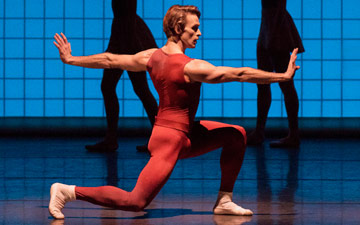
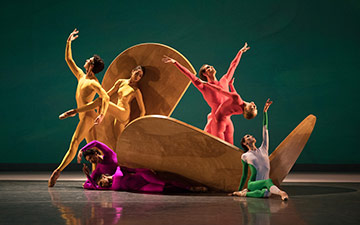
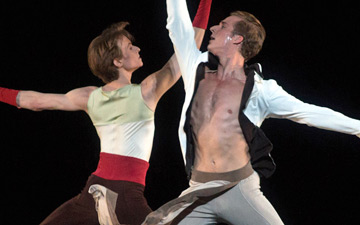
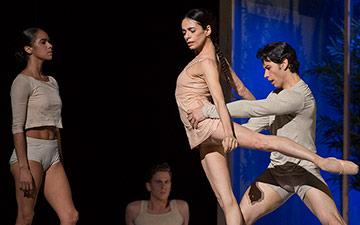
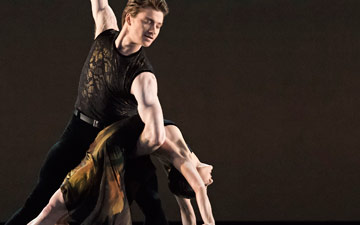
Marina, fascinating to read to read your comments about theme and Variations. In my remembrance of Alicia Alonso and Igor Youskevitch I commented on her stabbing points – oh, so emphatic. And those blue/black costumes designed by Eugene Berman. So gratifying.
It’s good to read about Aran Bell — I think he was one of the three dancers singled out in the documentary First Position, and he was a finalist in the 2018 USA IBC in Jackson –
there qujite diffident. Nice to know he’s doing well in ABT.
It’s invariably stimulating to read your evaluatioins.
DEar Renee, thank you for writing! Yes, I did miss the oomph in the feet. Always important in Balanchine! And I hope you get to see Bell one of these days. Promising.
Cheers,
M